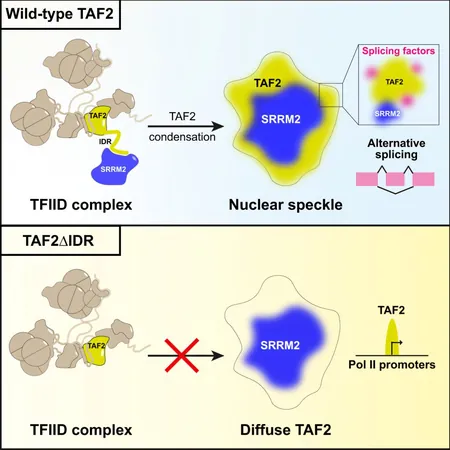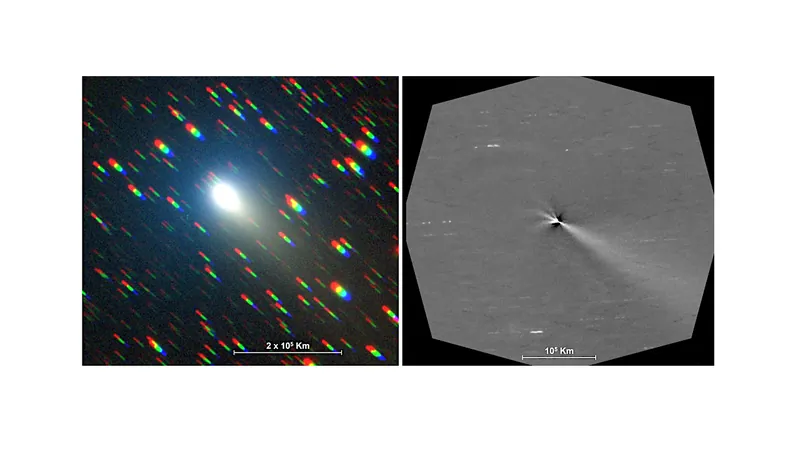
Game-Changer in Infrared Tech: MIT's Atomic Lift-Off Enables Room-Temperature Sensors
2025-04-25
Author: John Tan
Revolutionary Breakthrough in Infrared Sensors
In an exciting leap for technology, scientists from MIT have unveiled a groundbreaking technique called atomic lift-off, paving the way for ultra-thin, infrared-sensitive films. This innovative approach promises to revolutionize night vision and IR sensing technologies, making them lighter and more efficient.
Understanding Infrared Sensors and Their Importance
Infrared sensors are pivotal in modern electronics, found in medical devices, aviation, and military applications. They harness infrared light to facilitate tasks such as advanced night vision. Traditional systems, however, often rely on bulky pyrodetector materials that require expensive cooling systems.
Challenges of Existing Technology
While infrared technology has transformed how we see in the dark, conventional sensors come with significant drawbacks. Their weight and reliance on cooling systems not only inflate costs but also complicate maintenance. Moreover, external interference can disrupt their signals.
The Shift to Pyroelectric Infrared Detection
A shift towards using pyroelectric materials has emerged, focusing on ultra-thin sheets that operate efficiently at room temperature. However, the challenge has been manufacturing these delicate materials without damaging them.
MIT's Atomic Lift-Off: A Solution Unveiled
MIT researchers, in collaboration with the University of Wisconsin-Madison, have developed the atomic lift-off method. Their study, published in Nature, details how they created ultra-thin perovskite membranes less than 10 nm thick—unlocking a path to efficient IR sensors.
Remote Epitaxy: The Key to Scalable Solutions
A cornerstone of their success is the remote epitaxy process, which cleverly uses an ultrathin layer of graphene for clean peel-off from the underlying scaffolding. This innovation allows for the precise fabrication of nanoscale strips, cutting costs and enhancing uniformity.
The Ideal Material: PMN-PT
Among various materials tested, PMN-PT emerged as the standout choice due to its ideal properties for peeling without damage. This discovery not only streamlines the production process but also eliminates the need for additional protective layers.
Impressive Results: Testing and Findings
The team demonstrated that thinner strips operated with increased sensitivity, achieving atomic-level precision in their lift-off process. They managed to produce a chip with 100 of these strips that responded brilliantly to infrared light.
The Impact: High-Performance Infrared Sensors at Room Temperature
These ultrathin sensors operate efficiently at room temperature and can detect far-infrared radiation—with high sensitivity to temperature changes—positioning them as formidable competitors to existing night-vision solutions.
Advantages of the Atomic Lift-Off Method
The atomic lift-off technique offers substantial benefits: thinner, lightweight membranes that eliminate cooling system requirements, resulting in reduced manufacturing costs and simpler designs.
Applications of Ultrathin IR Sensors
The potential applications are vast. From flexible electronics like bendable displays to enhancing EV safety with advanced sensing capabilities in poor visibility conditions, this technology will drive innovation. Additionally, the concept of miniaturizing night vision devices into glasses or even contact lenses is set to become a reality.
A Future with Environmental and Safety Monitoring
Thin, flexible IR sensors could monitor environmental changes with minimal disruption and protect electronic systems by detecting heat variations, essentially acting as safety nets in tech industries.
Looking Ahead: When Can We Expect These Sensors?
As exciting as this development is, the timeline for commercial integration of these sensors could be as soon as five years, promising a future where infrared technology is more available and more effective.
Investing in the Future of Infrared Sensing
With competitors already innovating in the IR sensor market, the technology pioneered at MIT showcases a cost-effective and high-performance alternative that could reshape various industries. Analysts expect high demand and rapid adaptation once these sensors hit the market.
Conclusion: A Bright Future for Atomic Lift-Off Technology
The future looks promising for ultrathin IR sensors, with researchers aiming to demonstrate fully functional night-vision applications. The journey towards mainstream adoption of this technology may just be beginning, and it's one to watch closely!





 Brasil (PT)
Brasil (PT)
 Canada (EN)
Canada (EN)
 Chile (ES)
Chile (ES)
 Česko (CS)
Česko (CS)
 대한민국 (KO)
대한민국 (KO)
 España (ES)
España (ES)
 France (FR)
France (FR)
 Hong Kong (EN)
Hong Kong (EN)
 Italia (IT)
Italia (IT)
 日本 (JA)
日本 (JA)
 Magyarország (HU)
Magyarország (HU)
 Norge (NO)
Norge (NO)
 Polska (PL)
Polska (PL)
 Schweiz (DE)
Schweiz (DE)
 Singapore (EN)
Singapore (EN)
 Sverige (SV)
Sverige (SV)
 Suomi (FI)
Suomi (FI)
 Türkiye (TR)
Türkiye (TR)
 الإمارات العربية المتحدة (AR)
الإمارات العربية المتحدة (AR)